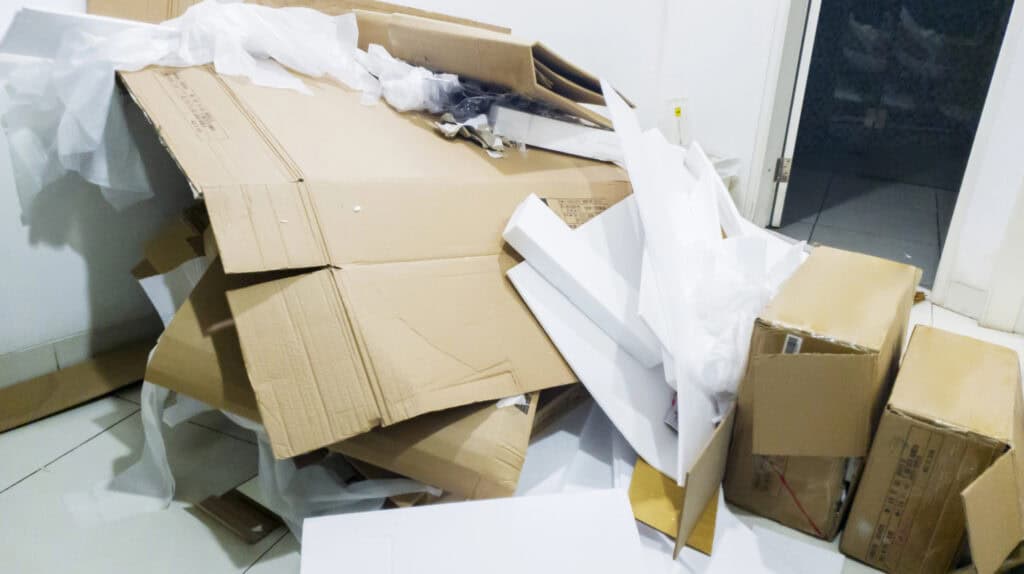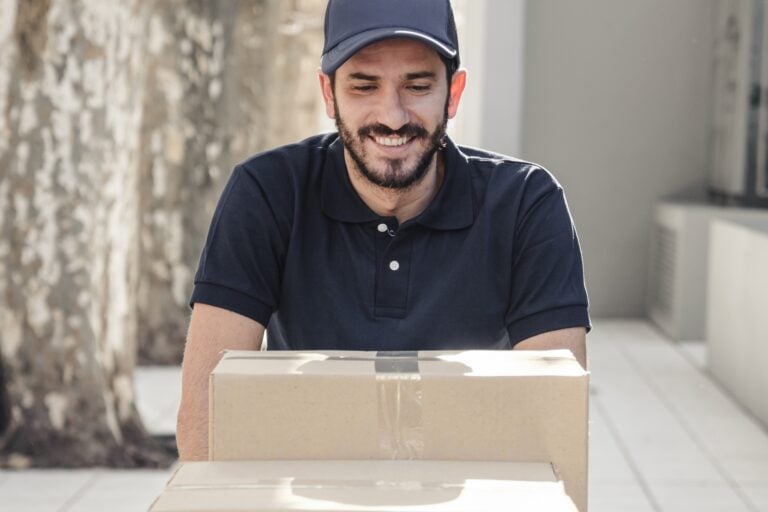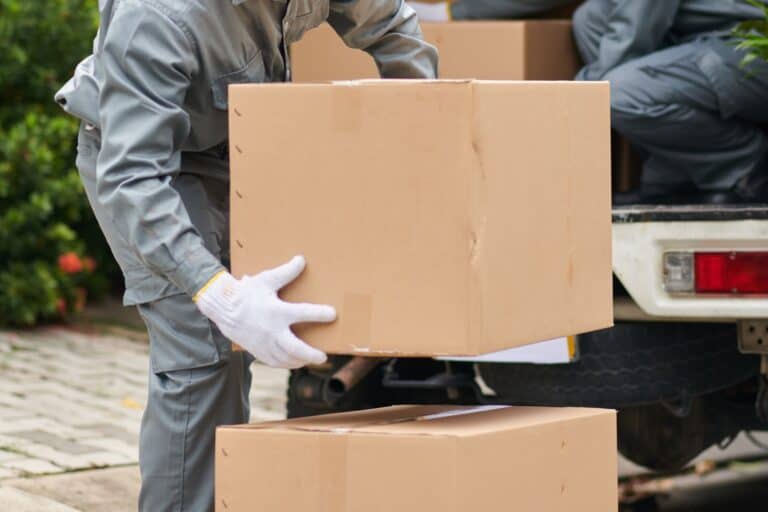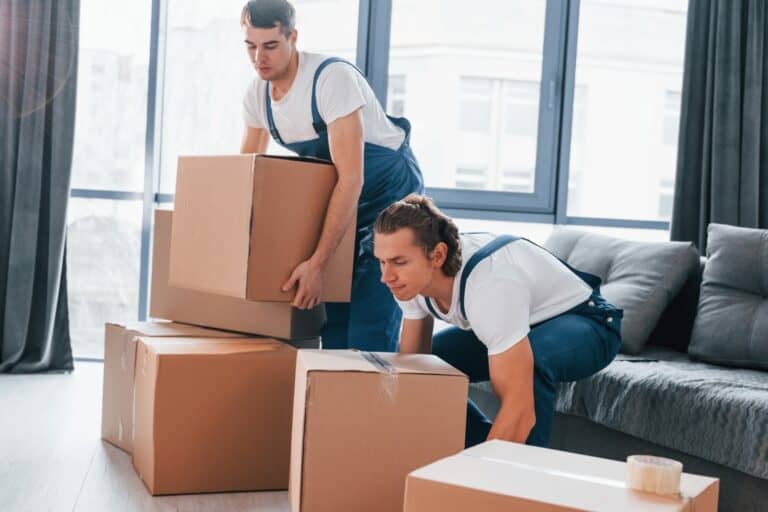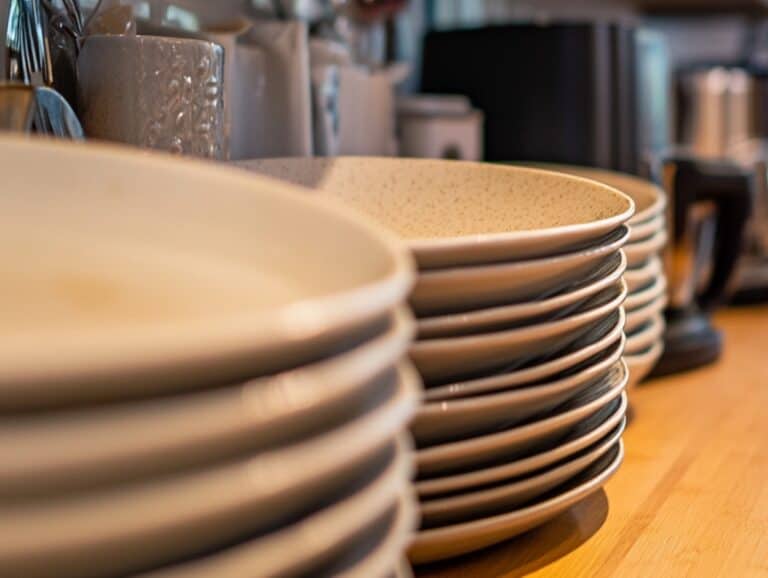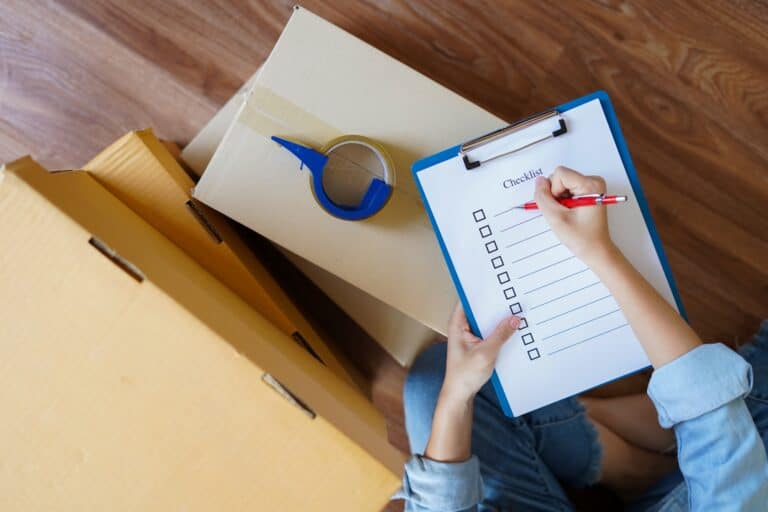Wondering what to do with packing materials after moving house? Managing these materials responsibly can save you space, help the environment, and even save some money. This article provides you with practical ways to reuse, recycle, and dispose of moving boxes, packing paper, bubble wrap, and packing peanuts.
Key Takeaways
- Reuse and repurpose moving boxes for future moves, storage, or by donating/selling them to save money and reduce waste.
- Recycle and creatively repurpose packing materials like packing paper and bubble wrap to minimise environmental impact and extend their useful life.
- Consider professional help such as hiring man and van services or professional movers for efficient and eco-friendly disposal of packing materials.
Reuse Moving Boxes for Future Needs
Moving boxes are incredibly versatile and can be reused in many ways, saving you both time and money. Whether you’re planning another move in the future, need extra storage space, or want to help others by donating or selling your used boxes, there are plenty of options to consider. By reusing these boxes, you’re not only preventing waste but also making the most out of the packing materials you invested in.
There are numerous practical ways to breathe new life into those empty cardboard boxes. From storing them for future relocations to using them as sturdy storage containers or even passing them on to someone else who needs used cardboard boxes, the possibilities are endless.
Store Moving Boxes for Future Moves
One of the most straightforward ways to reuse moving boxes is by storing them for future moves. Keeping empty moving boxes can save you money and time when the next big move rolls around. Instead of scrambling to find new boxes, you’ll already have a stash of sturdy boxes ready to go.
Flattening and storing these boxes in a garage, attic, or basement ensures they take up minimal space. Plus, reusing moving boxes helps avoid the costs associated with buying new ones. It’s a practical, eco-friendly solution that keeps you prepared for any future relocations.
Use Boxes for Storage Space
Cardboard boxes aren’t just for moving – they can also be repurposed as excellent storage containers for your home, even if they are broken cardboard boxes. Use them to store seasonal items like holiday decorations, winter clothing, or summer sports gear, keeping these items organized and easily accessible.
Repurposing moving boxes for household goods can help declutter your living spaces …
Repurposing moving boxes for household goods can help declutter your living spaces, turning your attic or basement into more functional areas. Not only does this make your home more organized, but it also extends the life of the cardboard boxes, making the most out of your packing supplies and packing boxes.
Donate or Sell Used Moving Boxes
Another fantastic way to handle your used moving boxes is to donate or sell them. Many local charities and non-profit organisations can benefit from these donations, helping reduce waste and supporting those in need. You can also reach out to friends, family, or community groups like Buy Nothing on Facebook or NextDoor to find someone who might need free moving boxes.
If you prefer to sell your used moving boxes, consider listing them on platforms like Craigslist or local supermarket community boards. Not only will this help others save on moving costs, but it also keeps usable materials out of landfills, promoting a more sustainable approach to moving.
Eco-Friendly Disposal of Packing Paper
Packing paper is another common byproduct of moving. Fortunately, there are several eco-friendly ways to dispose of it. Recycling and repurposing are two excellent methods that help reduce waste and give this material a second life. By taking a thoughtful approach, you can ensure that your packing paper doesn’t end up in a landfill.
Consider how you can recycle packing paper and discover creative DIY projects to repurpose this versatile material.
Recycle Packing Paper
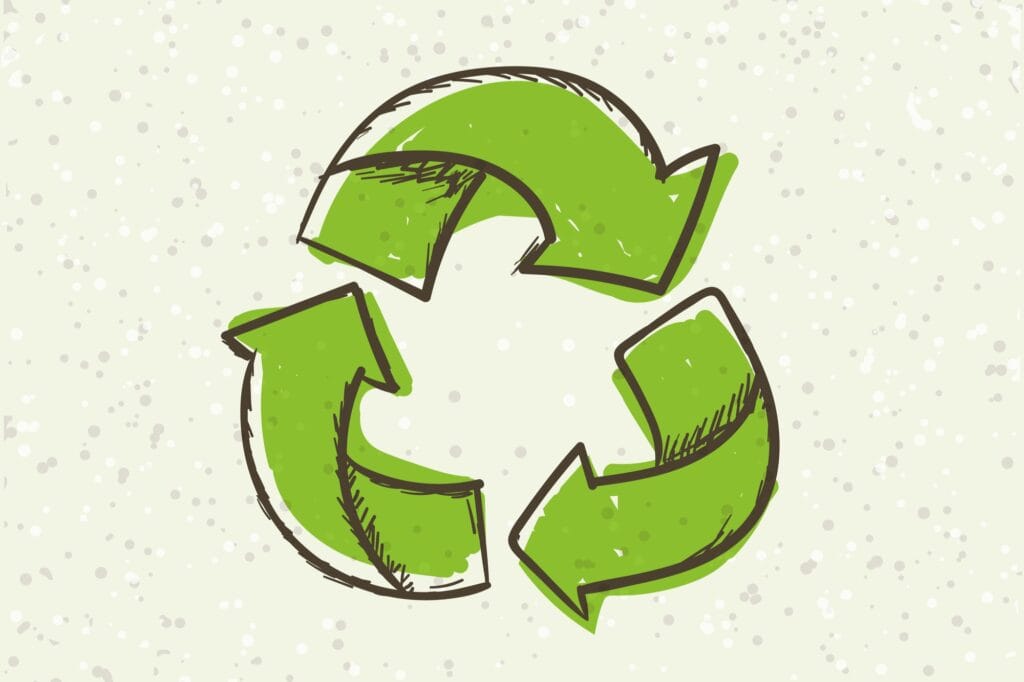
Recycling packing paper is a straightforward process, but it’s crucial to follow your local recycling guidelines to ensure it’s done correctly. In East London, for instance, packing paper can often be recycled along with other paper products. Check with your local council for specific recycling instructions.
Packing paper can be placed in the clear sacks and purple recycling bins provided by the local council. Make sure the packing paper is clean and free from contaminants like tape or food residue before recycling it. This simple step can make a big difference in your eco-friendly efforts.
Repurpose Packing Paper for DIY Projects
If you’re feeling creative, packing paper can be repurposed into a variety of DIY projects. Use it for gift wrapping, creating homemade gift bags, or crafting custom envelopes. This not only saves money but also adds a personal touch to your gifts.
Additionally, packing paper can be used for various fun projects around the house. Whether it’s crafting notepads, engaging in art projects, or even using it as wrapping paper, the possibilities are endless. Get creative and turn your leftover packing paper into something useful and beautiful.
Managing Bubble Wrap and Packing Peanuts
Bubble wrap and packing peanuts are excellent for protecting fragile items during a move, but they can be tricky to dispose of responsibly. Fortunately, there are ways to manage these materials that are both practical and eco-friendly. Reusing bubble wrap for insulation and properly disposing of packing peanuts ensures these materials don’t end up as waste.
Discover some methods to maximise the use of bubble wrap and packing peanuts after your move.
Reuse Bubble Wrap for Insulation
Bubble wrap can be repurposed for various insulation purposes around the home. It’s an excellent material for keeping rooms warmer by covering windows or protecting delicate plants from the cold. Simply cut the bubble wrap to fit the size of your windows or wrap it around fragile items during storage.
This not only saves money on insulation materials but also extends the useful life of the bubble wrap. It’s a simple, effective way to make the most of your packing supplies.
Proper Disposal of Packing Peanuts
Packing peanuts come in two main types: starch-based and polystyrene-based foam. Starch-based packing peanuts are biodegradable and can be easily dissolved in water or composted. They’re an eco-friendly option that can be added to your garden compost heap.
Polystyrene packing peanuts, on the other hand, are not biodegradable and require proper disposal at recycling facilities. Check with your local recycling centre for guidelines on how to dispose of these materials responsibly.
RECOMMENDATION
After moving, repurpose bubble wrap for insulation around the home, such as covering windows or protecting plants, to extend its usefulness. For packing peanuts, compost biodegradable starch-based types, and take non-biodegradable polystyrene ones to a recycling facility to ensure responsible disposal.
Recycling Cardboard Boxes
Recycling your cardboard boxes is one of the best ways to handle them after a move. By recycling, you’re conserving energy, reducing greenhouse gas emissions, and combating deforestation. It’s a simple yet impactful step towards a more sustainable lifestyle.
Explore how to prepare your cardboard boxes for recycling and locate local recycling centres for drop-off.
Flatten and Prepare Boxes for Recycling
Before recycling your cardboard boxes, it’s important to remove all packing materials, such as packing peanuts, plastic inserts, and tape, to avoid contamination. Once the boxes are free from any contaminants, flatten them to make handling and transport easier.
Check with your local recycling centres for specific guidelines on how to properly dispose of cardboard, especially if they have metallic linings or composite materials. Following these steps ensures that your cardboard boxes are recycled efficiently and effectively.
Find Local Recycling Centers
Finding local recycling centres in East London is essential for proper disposal of your cardboard boxes. Local councils offer different recycling facilities and guidelines, so it’s important to check the specific rules in your area.
For example, Northumberland Wharf Reuse and Recycling Centre is a great option for dropping off recyclable packing paper and cardboard.
Creative Uses for Leftover Packing Materials
Leftover packing materials don’t have to go to waste. There are plenty of creative ways to repurpose these materials, whether it’s through craft projects with kids or using cardboard in the garden. These ideas not only help reduce waste but also provide fun and practical solutions for your home.
Here are some innovative ideas for getting the most out of your leftover packing materials and recycling packing materials efficiently.
Craft Projects with Kids
Engaging children in craft projects using packing materials is a great way to teach them about recycling while providing fun activities. Here are some ideas:
- Turn moving boxes into DIY jewellery holders
- Use boxes to create toy storage bins
- Transform boxes into play pet tanks with decorations from nature like rocks and sticks
These projects will not only keep children entertained but also encourage them to think creatively and be mindful of the environment.
Empty boxes can also be transformed into entertaining projects such as:
- light caves
- cardboard slides
- train tunnels
- mailboxes
These creative projects can provide hours of imaginative play and help your kids learn the value of repurposing materials.
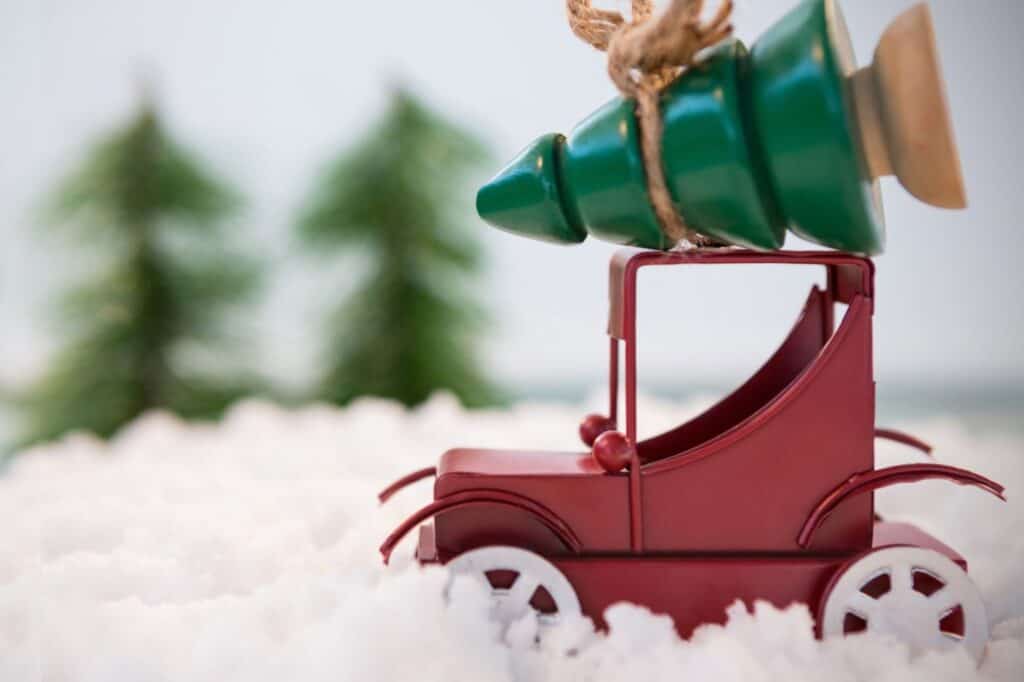
Garden Uses for Cardboard
Cardboard can be incredibly useful in the garden. It can be used to create compost bins, enhancing the decomposition process for organic waste by shredding small, uncontaminated scraps and adding them to the compost. Additionally, laying cardboard sheets on the soil can act as a weed barrier, preventing unwanted plant growth.
Cardboard can also serve as a biodegradable mulch, helping to retain soil moisture and improve soil structure. These practical uses make cardboard an excellent resource for any gardener looking to enhance their garden sustainably.
Professional Help for Packing Material Disposal
Sometimes, the best way to handle packing material disposal is to seek professional help. Man and van services and professional movers offer efficient solutions for collecting and disposing of packing materials, ensuring they are handled responsibly and sustainably.
Discover the benefits of hiring professionals to take care of your packing material disposal needs.
Hiring a Man and Van Service
Hiring a man and van service in East London can be a cost-effective and convenient option for disposing of your packing materials. These services often have lower overheads compared to large removal companies, making them more affordable. They are versatile and can handle a variety of tasks, such as house removals, rubbish clearance, and appliance removal.
Due to their local operations, man and van services are familiar with local traffic patterns and parking regulations, making the process smoother and more efficient. They can also be scheduled at times convenient for you, providing flexibility for busy homeowners.
Utilising Professional Movers
Professional movers offer expert packing, transport, and disposal services, ensuring that your packing materials are handled in an eco-friendly manner. These movers are equipped with the expertise to:
- Pack your belongings safely and securely
- Transport your items to your new location
- Dispose of packing materials without causing damage
- Provide guidance on local recycling options
- Sort materials for recycling
By hiring professional movers, you can have peace of mind knowing that your packing materials will be handled responsibly.
Many moving companies offer services that include the removal of unwanted packing materials as part of their sustainability initiatives. This means you can rest assured that your packing materials are being disposed of responsibly.
Quick Decluttering Tips After Moving House
Moving house presents a perfect opportunity to declutter and start fresh in your new space. By following quick and efficient decluttering tips, you can avoid the overwhelming feeling that often accompanies unpacking. Prioritising essential items and organising storage containers are key steps to creating an organized and clutter-free home.
Here are some straightforward tips to streamline your decluttering process after moving.
Prioritize Unpacking Essential Items
When you first move into your new home, it’s crucial to prioritize unpacking essential items. This allows you to quickly create a functional living environment and avoid cluttering your new space with unnecessary packaging materials. Focus on unpacking items like kitchen utensils, toiletries, and bedding first to ensure you have everything you need for daily living.
By organising and setting up these essential items, you’ll make your new home feel comfortable and efficient right from the start. It’s a simple step that can make a big difference in your settling-in process.
Organise and Label Storage Containers
Properly organising and labelling your storage containers is another important step in maintaining an organized home. Label moving boxes by room or type of item to make it easier to find your belongings later. This not only helps during the unpacking process but also ensures that your storage areas remain tidy and easy to navigate.
Investing in sturdy storage containers and labelling them properly will save you time and hassle in the long run. It’s a practical way to keep your new home organized and clutter-free.
Summary
Handling packing materials after a move doesn’t have to be a daunting task. By reusing, recycling, and repurposing items like cardboard boxes, packing paper, bubble wrap, and packing peanuts, you can significantly reduce waste and contribute to a more sustainable lifestyle. From storing boxes for future moves to engaging in creative DIY projects, and even seeking professional help for disposal, there are plenty of options to explore. Remember, every small step counts when it comes to being eco-friendly. By following these tips, you’ll not only keep your new home organized but also make a positive impact on the environment. So go ahead, turn those leftover packing materials into something useful and beautiful, and enjoy your clutter-free, eco-friendly home.
Frequently Asked Questions
What should I do with my used moving boxes after a move?
You can store your used moving boxes for future moves, repurpose them for storage, or donate/sell them to others who might need them. Avoid letting them go to waste.
How can I recycle packing paper?
You can recycle packing paper by checking your local recycling guidelines and ensuring it’s clean and free from contaminants. In East London, you can use the clear sacks and purple recycling bins provided by the council.
What can I do with leftover bubble wrap?
You can reuse leftover bubble wrap for insulation on windows, protecting delicate plants, or wrapping fragile items during storage. Don’t let it go to waste!
How do I properly dispose of packing peanuts?
You can properly dispose of starch-based packing peanuts by dissolving them in water or composting them, and for polystyrene-based peanuts, take them to the proper recycling facilities. It’s important to know the difference to dispose of them correctly.
Where can I take my cardboard boxes for recycling in East London?
You can drop off your cardboard boxes at local recycling centres like Northumberland Wharf Reuse and Recycling Centre. Check with your local council for specific guidelines.
